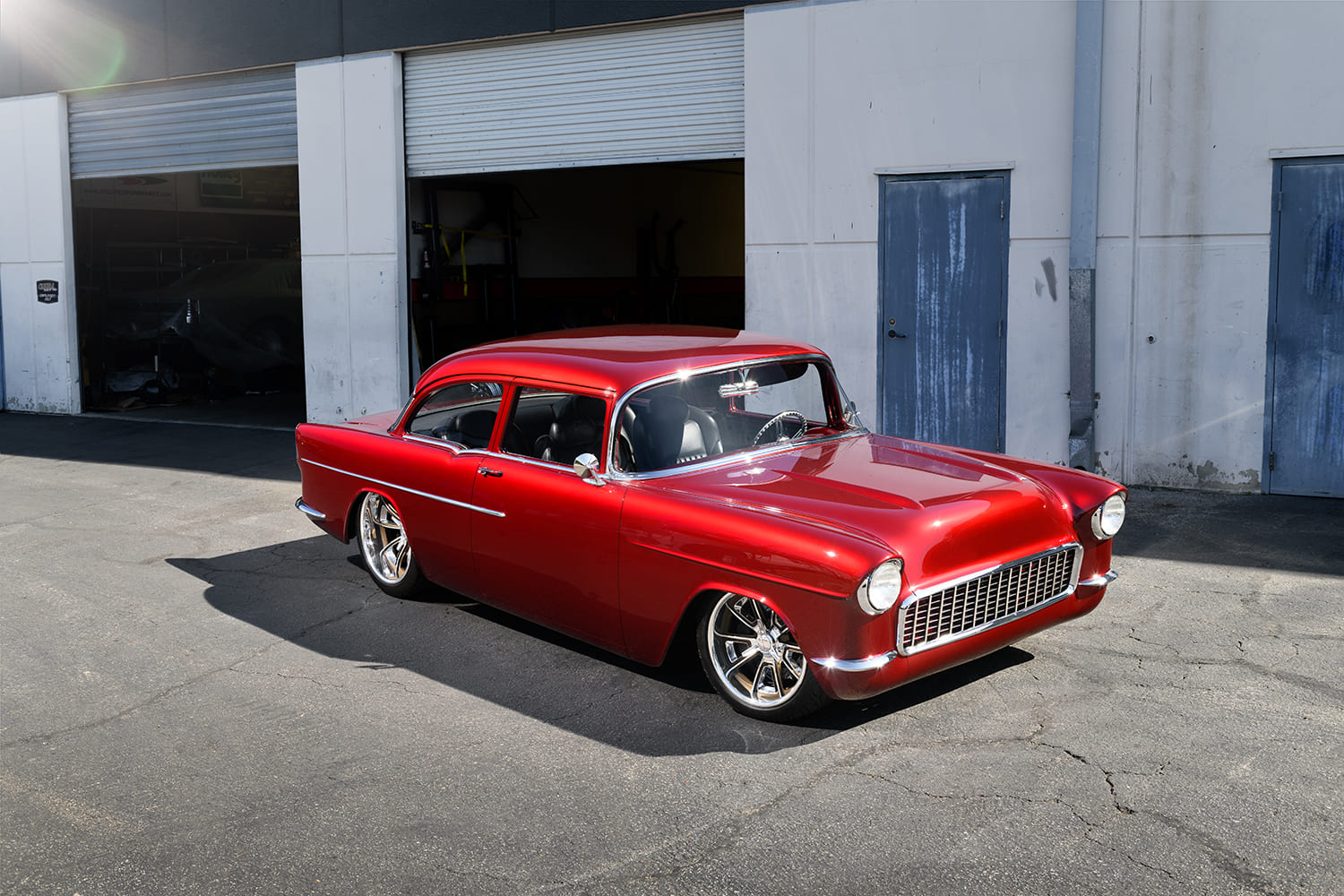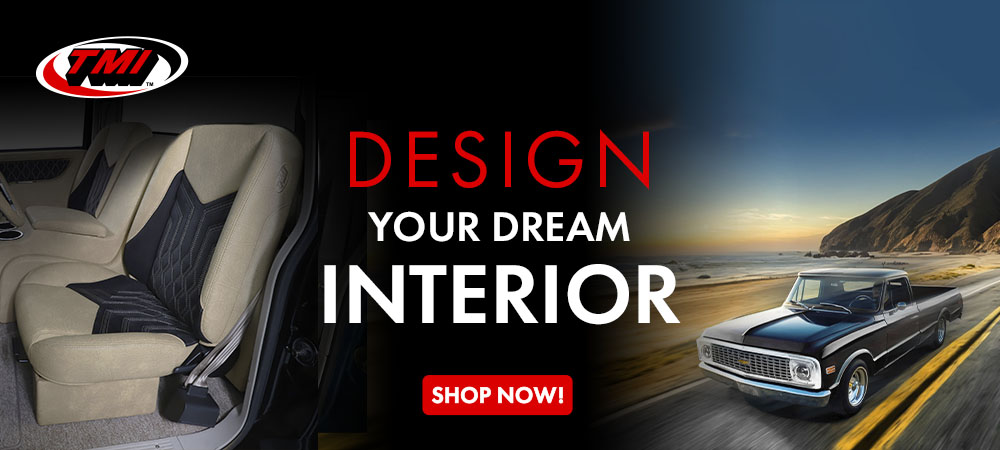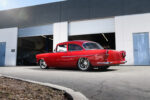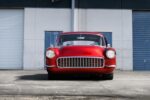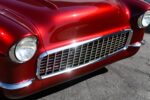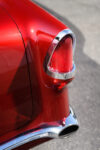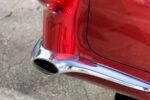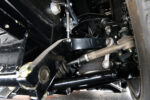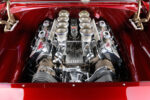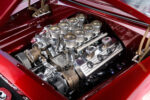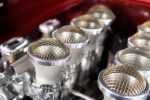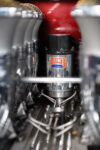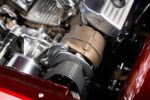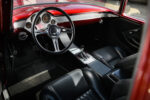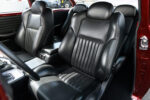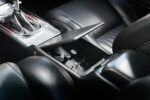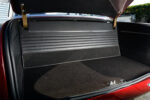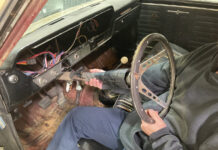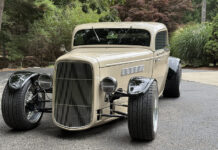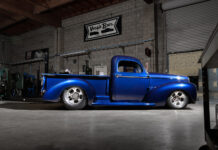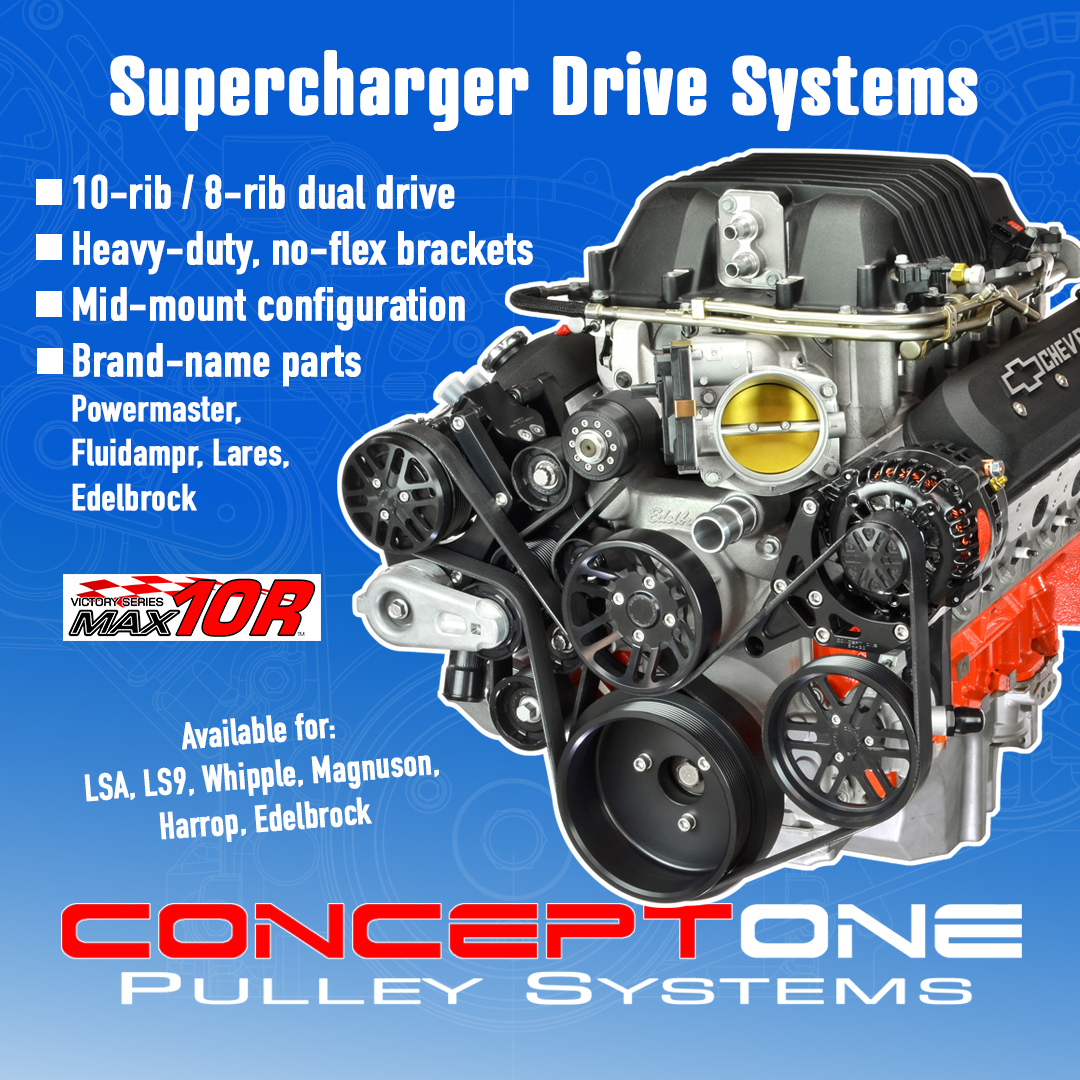By Brian Brennan – Photography By Luke Munnell
The name Gary Stell Jr. may sound familiar, especially to those who recently read the article on page xx about a stunning 1951 Mercury custom. In this issue, we highlight not just one but two of Gary’s exceptional vehicles: his flawless 1951 Mercury custom and his visually appealing mild custom 1955 Chevy. Both cars were crafted with the expertise of Ron Cambra and his staff from Cambra Speed Shop (CSS).
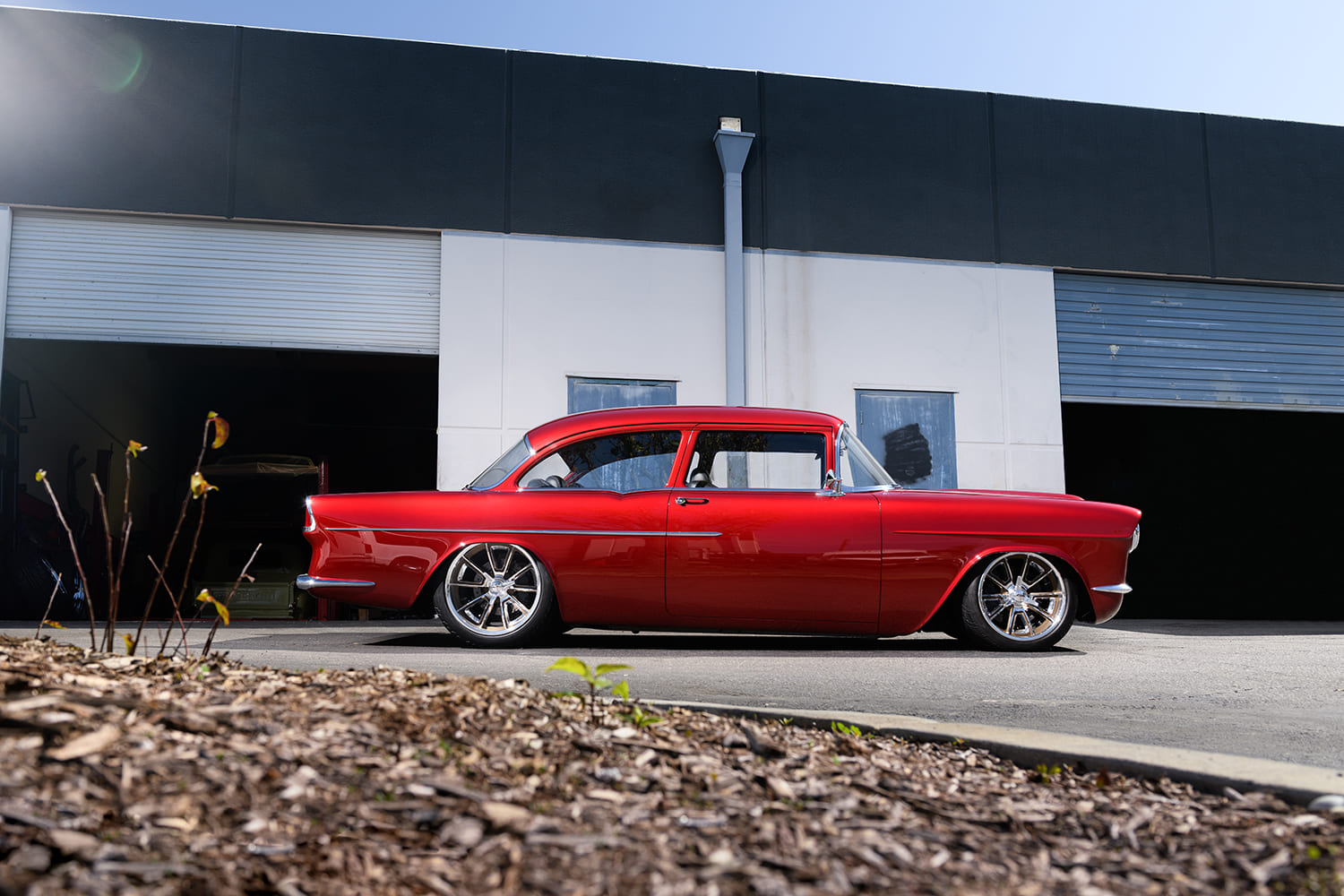
Under the hood of these impressive machines lies a Mast Motorsports V-8 engine. Although it resembles an injected Hemi, it is actually an LS 427 Black Label developed by Mast Motorsports. This all-aluminum block and head configuration delivers an astonishing yet street-friendly 750 hp from 427 ci. It features diamond alloy pistons boasting a formidable 10:1 compression ratio and a Mast custom grind cam. ARP head studs secure the reworked aluminum heads, and the valve covers—though reminiscent of a Hemi—are custom pieces crafted by George Lawrence of Greening Auto Company (GAC) in collaboration with CSS.
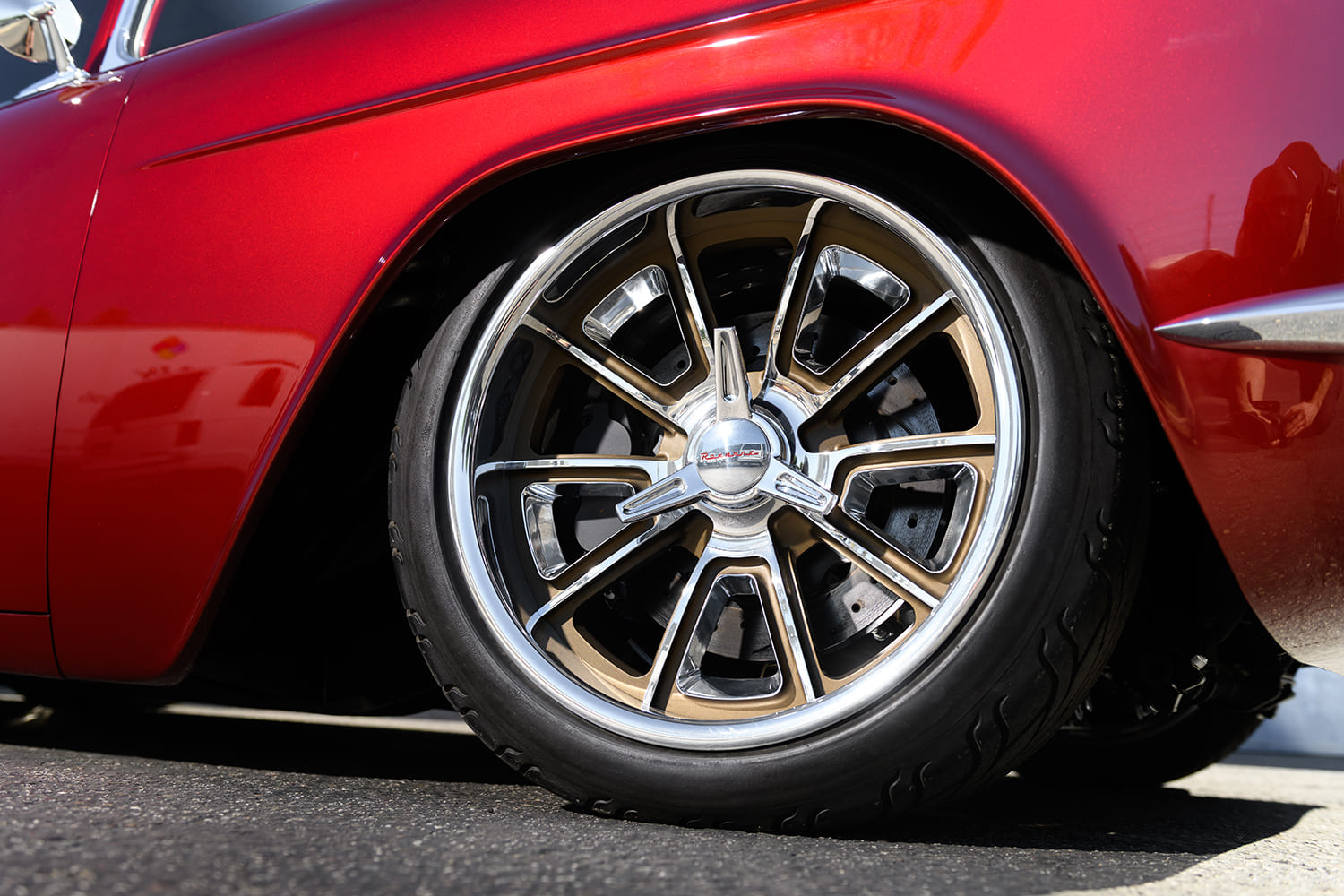
The engine’s Hilborn injection system, designed in the popular eight-stack configuration, incorporates modern EFI technology, complemented by a Weldon Racing Pumps fuel pump and velocity-style air cleaners from GAC’s Lawrence. The ECU overseeing this powerful V-8 is sourced from Holley. The ignition system features a faux Joe Hunt magneto, allowing spark plug wires to pass seamlessly. A pair of OPTIMA batteries provide power and have now been relocated to the trunk area. The exhaust system consists of headers made by CSS with a 2-inch diameter that transitions to 3-inch polished stainless steel tubing, leading to a pair of CGS Motorsports mufflers. The exhaust tips exit through a custom-made pair of rear bumpers instead of the signature single rear 1955 bumper.
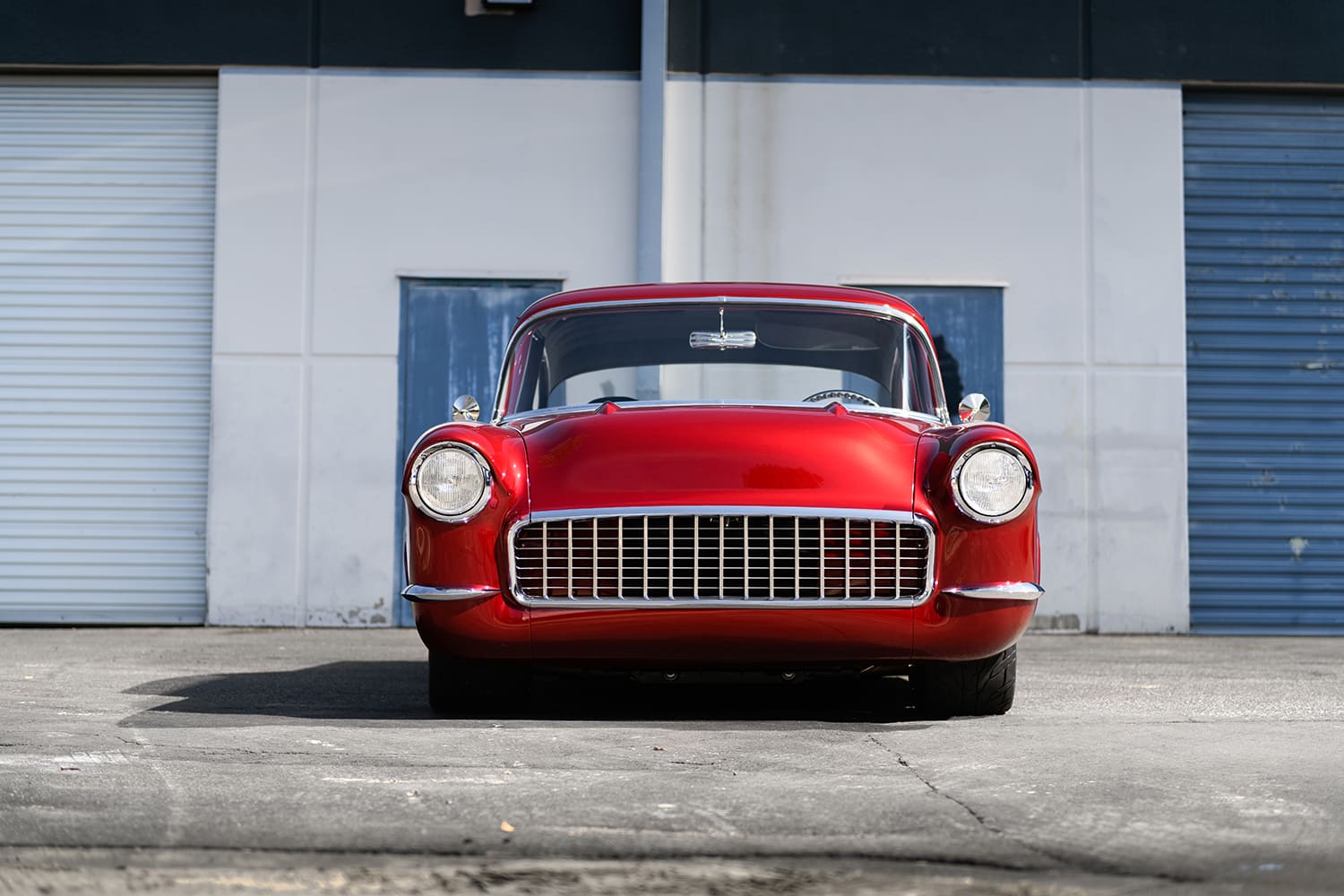
Additional engine accessories include a polished water pump, dual electric fans paired with a Champion radiator, a Power Master alternator, and a high-torque starter. Mountain Precision supplies an oil cooler from Mast Performance and engine pulleys to complete the power unit.
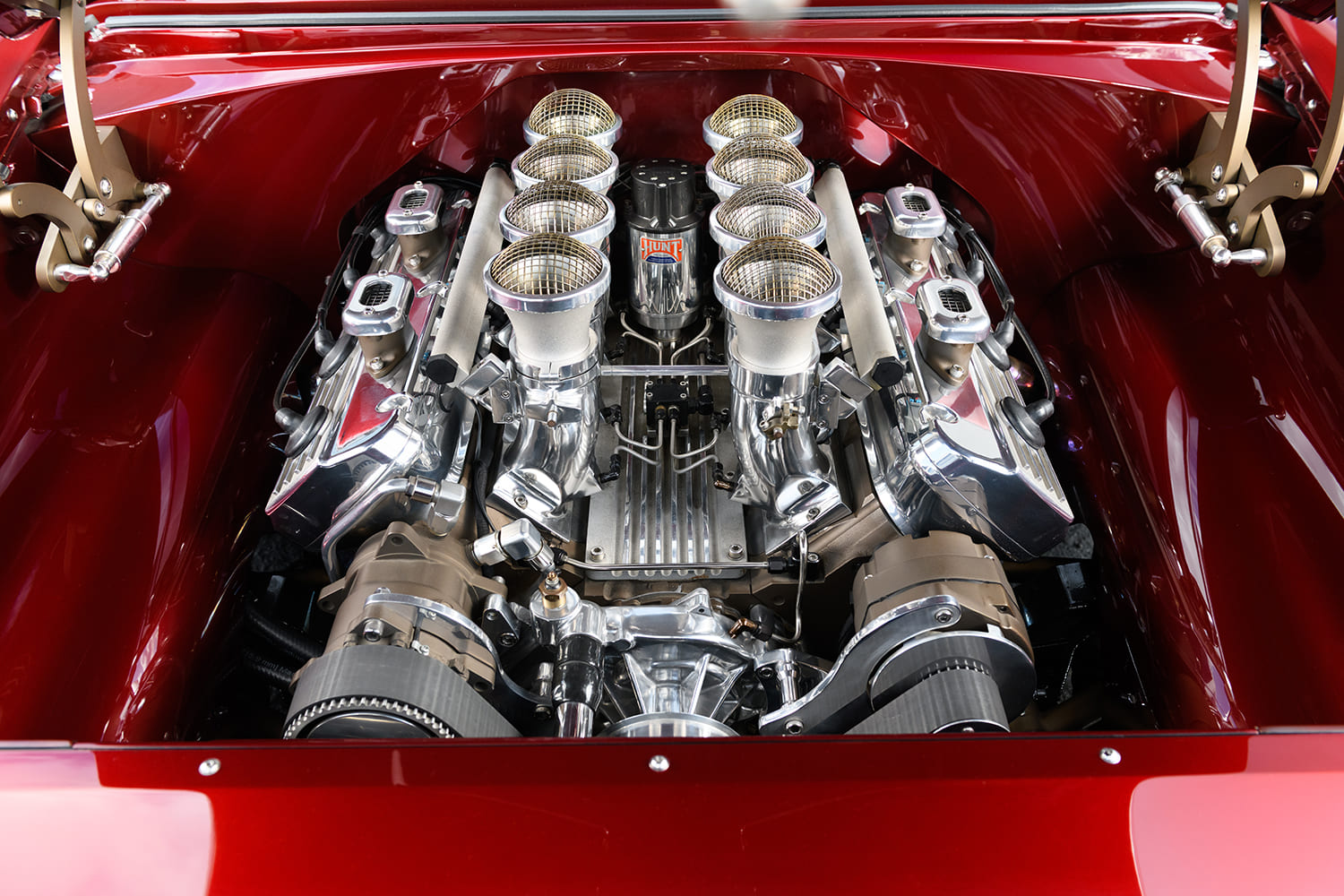
The 1955 Chevy sits on a rear suspension derived from a Roadster Shop IRS, now narrowed by 4 inches on each side. The rear also features 4.11 gears and 31-spline axles. Mated to the LS motor is a Chevy transmission from Hughes, which includes a Hughes 2,800-stall speed converter and a Lokar shifter. A custom trans cooler from CSS was also designed alongside the integrated driveshaft from Drivelines Incorporated. The frame design originates from Roadster Shop and was modified to be narrower at both the front and rear. CSS then fabricated a custom stainless steel 17-gallon fuel tank.
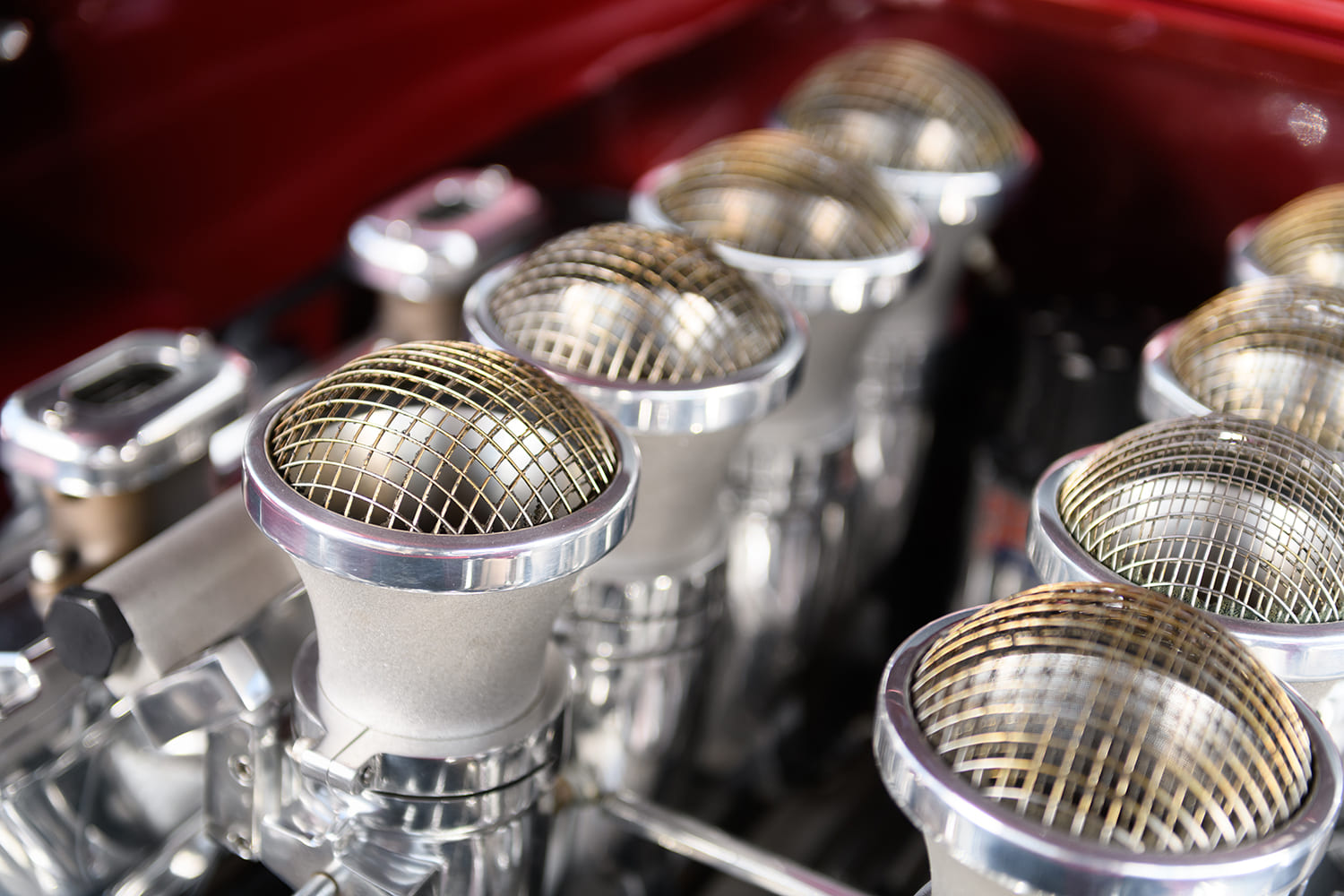
The IFS system utilizes components from Roadster Shop, including QA1 adjustable shocks, a Roadster Shop front sway bar, and front spindles. The steering system includes a power steering rack-and-pinion from Roadster Shop that connects to an Ididit steering column. Wilwood brakes installed on the Chevy feature 14-inch drilled-and-slotted rotors paired with four-piston calipers. Notably, the master cylinder is cleverly housed under the front fender and actuated by a custom bellcrank assembly crafted by the Cambra team.
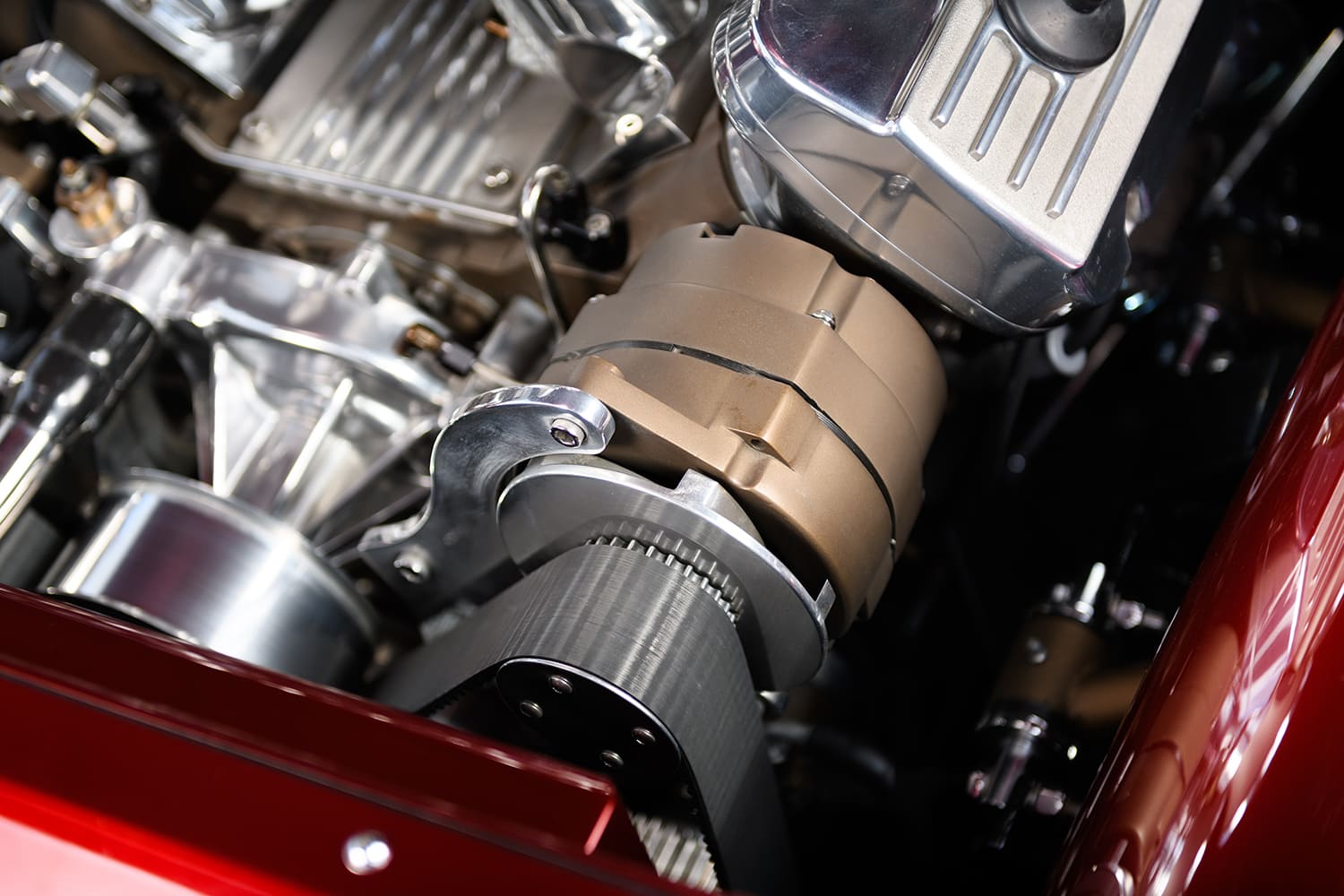
Rolling on Schott THROTTLE d.concave series billet wheels, the front measures 18×10 while the rear is an impressive 20×16. Both are cloaked in high-performance Mickey Thompson rubber with shaved sidewalls, measuring 245×18 and 29x18R20LT. The individual wheel caps feature the 1955 Chevy’s name “Roxanne” at the center of the caps. (It was 1978 when the rock group The Police introduced their song “Roxanne,” an instant hit.)
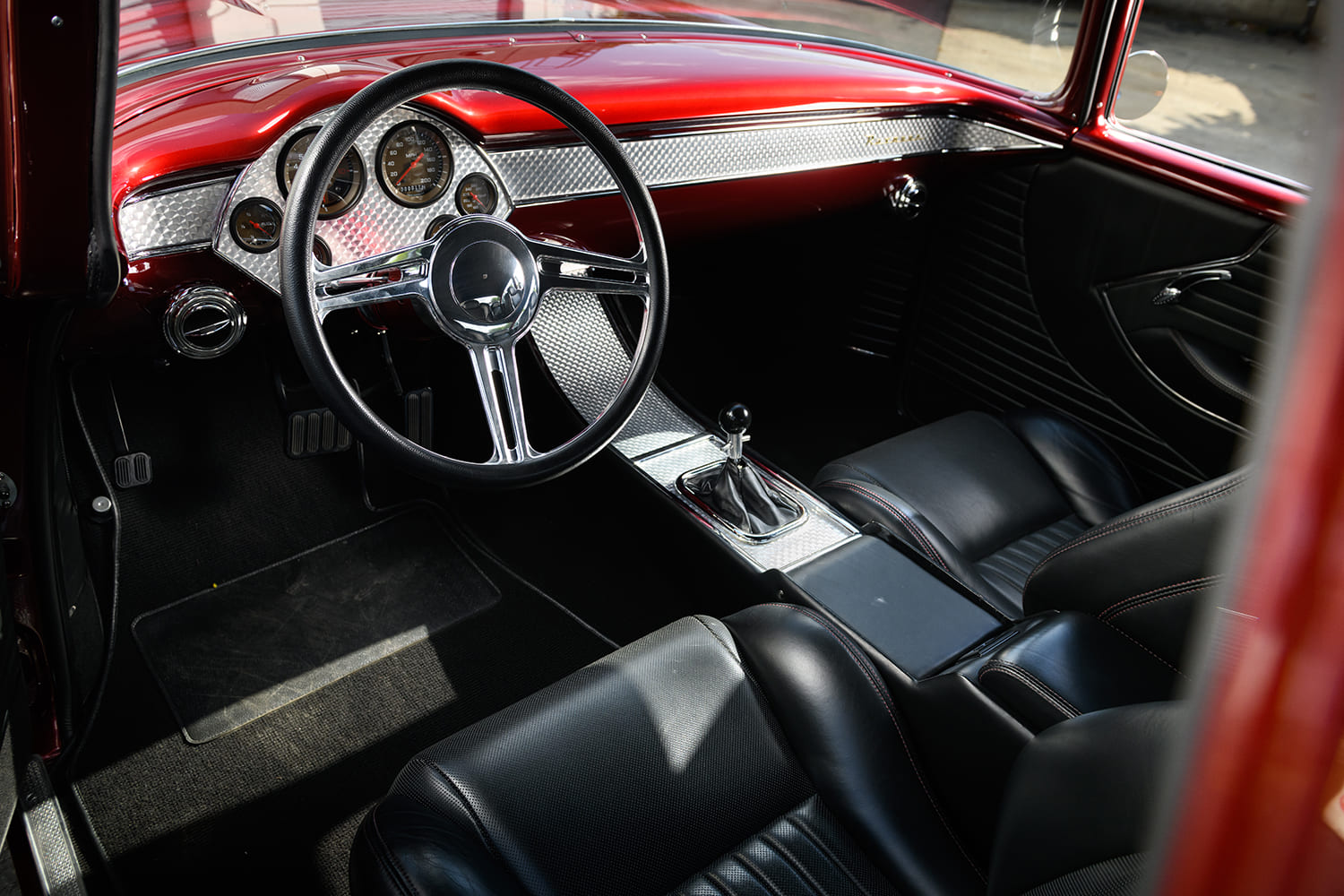
The body of this 1955 Chevy 210 Post car is entirely steel, showcasing several sheetmetal modifications. Among these alterations, Rick Kersh of CSS expertly angled the B-pillars and crafted a rolled front and custom rear body design, thereby eliminating the need for splash pans. The wheel openings have been enlarged to match the wheel’s radius and rubber profile. (A Chevy 210 Post refers to what was originally called the “Styleline DeLuxe” 2100 model, available in earlier years and still retaining the B-pillar.) Note the custom bumper treatment in the front and rear; it is clearly a custom touch and a significant departure from what we are accustomed to seeing on Tri-Five Chevys. For fans of the 1955 Chevy, you will immediately notice that the driver side gas filler door is no longer present. The filler is now integrated into the taillight assembly, reminiscent of a 1956 or 1957 Chevy. CSS executed the body- and paintwork in collaboration with Hitoshi. Paul Stoll from PPG meticulously mixed the unique PPG Roxanne Red color with a hint of pearl, resulting in a stunning finish.
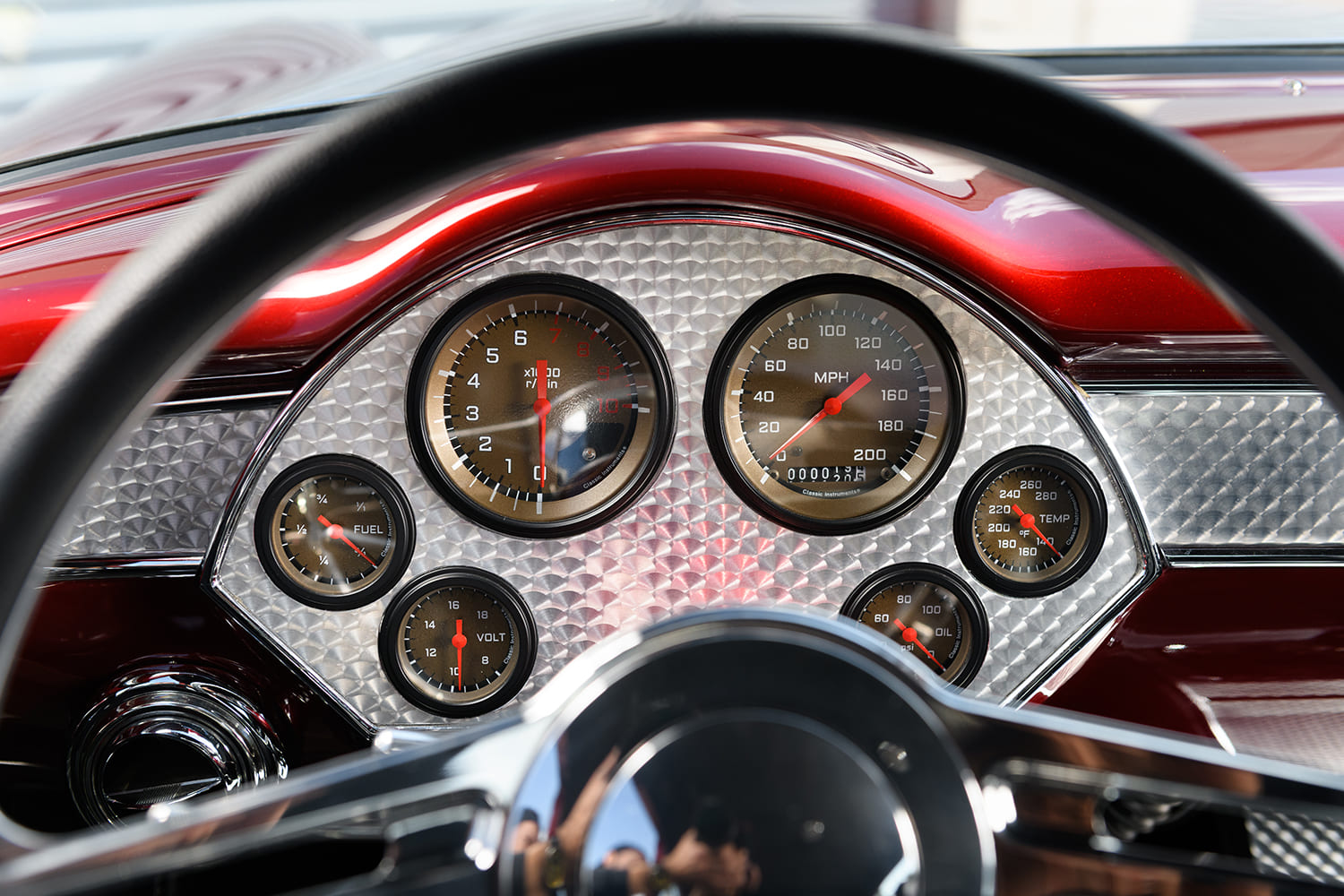
Inside, the interior showcases the classic 1955 Chevy foundation, featuring a custom engine-turned dash insert crafted by Kersh of CSS, which houses a complete set of six Classic Instruments, including a 200-mph speedometer and a 10,000-rpm tachometer. The wiring harness was installed at Cambra, connecting the Vintage Air A/C system. The seating includes modified 2004 GTO bucket seats, impeccably upholstered in black leather by Westminster Auto Upholstery, along with all door and kick panels, the headliner, and wool carpeting. The center console, designed by CSS with stainless steel trim, is highlighted with an engine-turned insert and houses the Lokar shifter while concealing the Vintage Air A/C controls and various toggle switches for the electric radiator fans, fuel door, and other accessories.
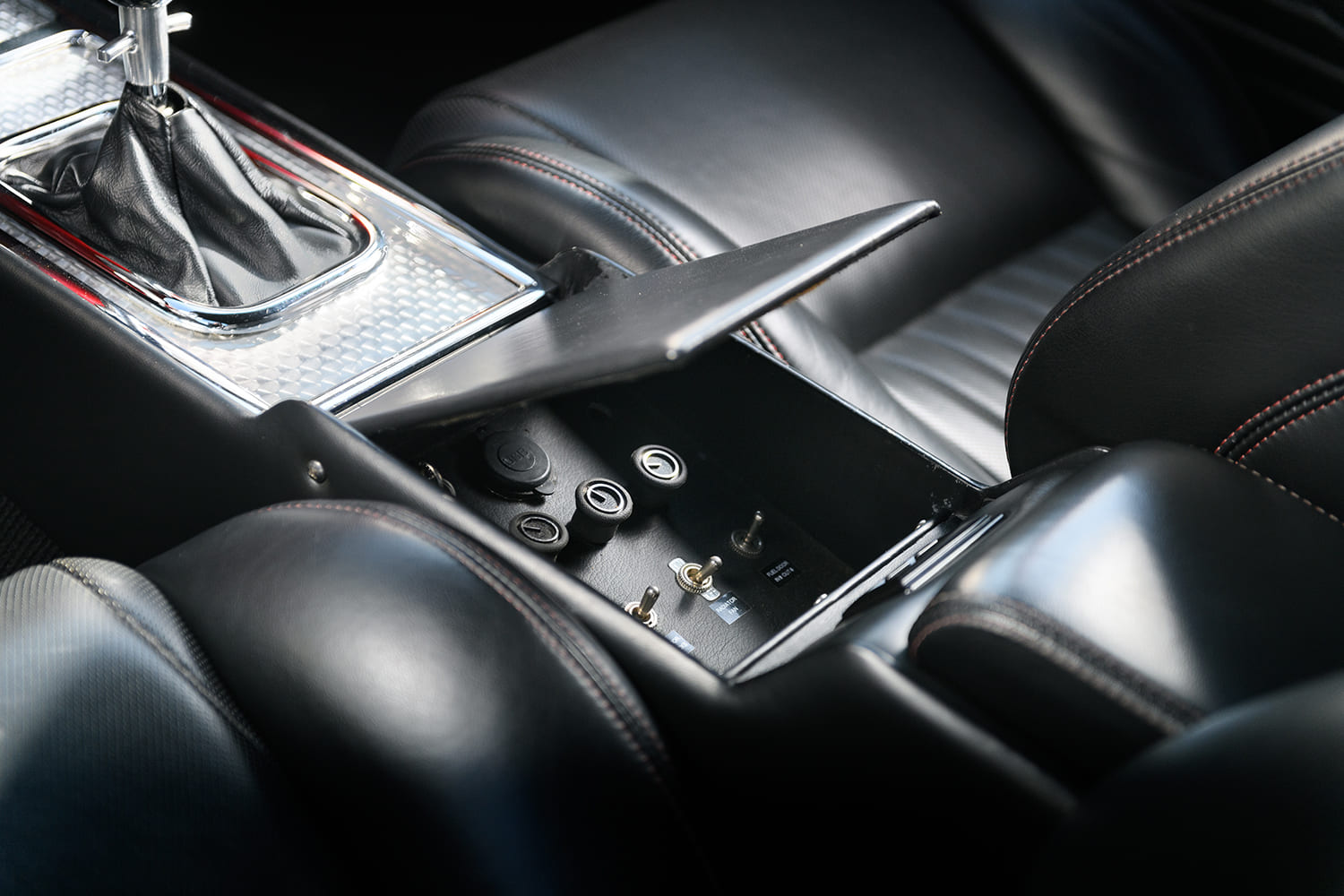
In conclusion, Gary Stell Jr.’s 1951 Mercury custom and 1955 Chevy exemplify automotive craftsmanship and highlight the industry’s collaborative efforts of talented specialists and craftsmen.
-MR
Check out this story in our digital edition here.











